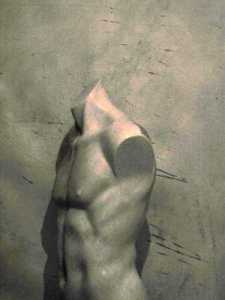

Dialogues with Simon Pockley.
My reflections are written in italics.
On 09/29/2006 08:27 AM Simon says:
This is a difficult question but it will help you if you can answer it
convincingly:
How will you measure the success of this project?
*
There are different levels and perspectives from which the success of the project can be assessed.
From the reader’s point of view (readers of the artworks)
What new knowledge does it contribute to understanding Antarctic landscape, and our relationship with it?
Is it intellectually and aesthetically engaging?
Does it provide evidence of a range of Antarctic landscape perceptions?
Does it communicate how experiencing Antarctic landscape can change a person?
Does it communicate physical changes that have been observed there?
Does it communicate psychological changes that have been experienced there?
From an artistic perspective
Do the words and images work together as one coherent voice?
From a personal point of view
Here is a still from an animation sequence shot today, improvising within the time constraints imposed by the digital camera (set to power down after a certain time), and the drying time of the paint on the brush used to scumble the previously lines painted on the body. I could release the camera from its setting and allow myself for ever to make the changes (rotating and painting), and I could have used slow-drying paint. Without the constraints to provoke immediate responses, thoughts can stray into self conscious awkwardness – premature self-judgment. In dialogue with the work, it’s vital to remain interested, open to being surprised by the unexpected. Otherwise you just repeat old habits, sleights of had, cliches unopen to discovering new ways.
In this way I was improvising within a set of physical restraints, or structures.
There was also the defining structure of a self-imposed score. Recalling the stitched lines made by Stephen Eastaugh in works such as MOOP – Man Out Of Phase, representing a journey over ice, and considering the layers in the ice itself, and the clockwise motion of the Southern Ocean, I chose to work with “lines, white drift covering, turning.”
Of course there is critical self-assessment. This will happen days after the making, after an object or animated sequence is completed, and you return to view it with a more objective eye.
And others whose opinions you value are invited to provide response and feedback.
